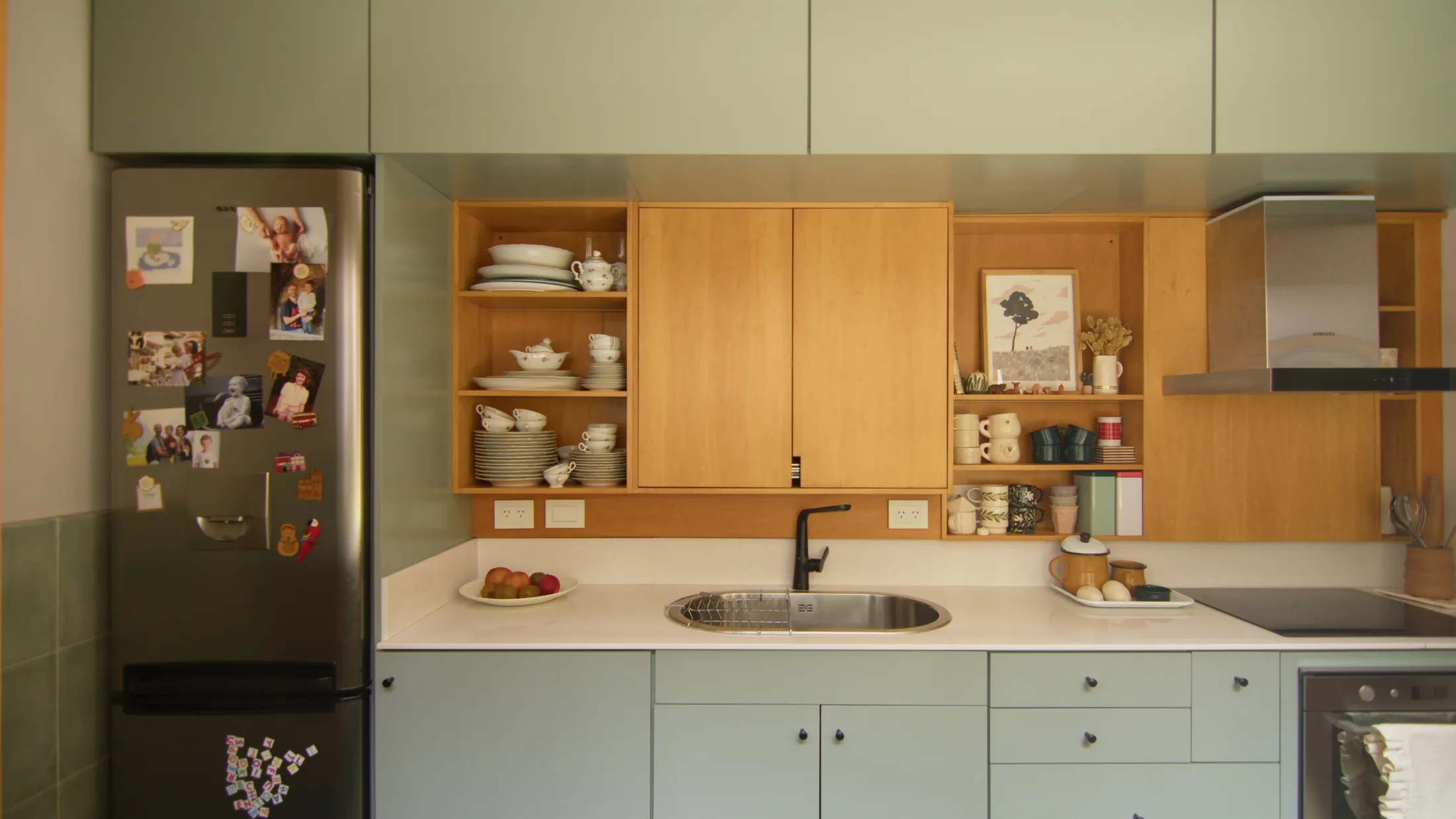Open Menu
Search

Interior architect Laura Libenson reimagines a historic 56sqm/603sqft Buenos Aires home around its green heart – a leafy, light-filled patio that anchors family life and sets the tone for slower routines, shared meals, and moments of connection.



“Our house was love at first sight. We weren’t even thinking about moving but the day we happened to pass by the door and saw a “For Sale” sign, something sparked”.





“Our priority was to create one big and comfortable living space where the 3 of us could spend most of the time together.”


“The main goal was to make the house feel more functional, spacious, and filled with natural light while still keeping its original charm.”








“Rethinking and reworking the spaces we live in is key. We’re used to seeing huge, luxurious homes in magazines. The reality is most of us live in small spaces, and just because they’re small doesn’t mean they have to be lower quality.”







Some homes don’t begin with floor plans or fixed ideas, but instead with the way people live, move, and gather. That’s exactly how interior architect Laura Libenson approached her own family home, La Casa Verde – a 56sqm/603sqft apartment in the leafy Buenos Aires suburb of Temperley. In her strikingly intuitive approach, Libenson eschewed theory to focus on the quiet rhythms of family life. And the result is a natural, grounded home: soothing in tone, practical in function, and rich with sentimental ties to the past, both in its structure and the things it holds.
That quiet, responsive design began with an old house in need of light, connection, and care. Built in the early 20th century, the former casa chorizo still retains the bones of its original layout – rooms once arranged around a central patio, with a separate outdoor staircase leading to a small upstairs storeroom. Libenson saw its potential not just in its charm, but in its capacity to be reimagined.
She began by, in her words, “bringing the patio back to life,” after it had been covered up by previous owners. It quickly became her favourite space in the home. Libenson added, “It’s a green spot that welcomes you with open arms as soon as you arrive.” Next, she removed most of the internal walls on the ground floor and added a staircase indoors. The stairs would come to act as the spine of the home, connecting all three levels while increasing space for books and personal pieces. “We added hidden storage space in every nook and cranny, as well as a huge open bookshelf,” said Libenson. “It’s not your typical use for a staircase, but it solved a lot of our storage issues and really gives the space its identity.” With these structural changes, Libenson reworked the home’s traditional layout into something far more fluid – one that now supports the ease and intimacy of her family’s everyday life.
Homes that breathe with warmth and character are often layered with texture and story. La Casa Verde is no exception. Some of that depth came through subtraction, some through addition. Libenson stripped the plaster from the ground-floor walls to reveal the home’s original construction and introduce texture into the space. Similarly by removing the dropped ceilings in the living and dining areas, Libenson managed to expose the original vaulted brick above. The space now carries light, volume and a quiet warmth that speaks to its past.
Her additions were equally intentional, striking a careful balance between sentiment and function. “On top of the sideboard I have my grandmother’s old sewing machine that I still use to this day,” Libenson explained. The old rocking chair in the living room – passed down from her mother-in-law – is, as she notes, everyone’s favourite place to sit. The coffee table and dining table were not inherited but instead both made by Libenson herself, one during a woodworking class, the other from repurposed exhibition materials. Together, they add a thoughtful layer of memory and care to the space.
Libenson’s home reflects a design philosophy rooted not in rules, but in responsiveness. By letting go of traditional expectations – of what a living room, or even a staircase should be – she’s created a space that works for the life her family actually lives. Every room is intentional but never rigid, allowing daily rhythms to shape how the home is used. Carefully reworked rather than completely reimagined, the result is a home full of history, personality, and possibility – proof that flexibility isn’t just a design strategy, but a way of living well.
-
See this home in Issue 2 of our magazine! Purchase your copy https://www.nts-store.com/collections/magazine